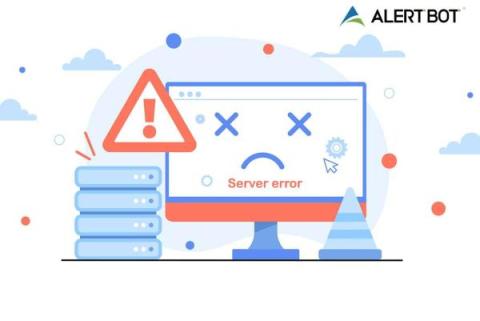Operations | Monitoring | ITSM | DevOps | Cloud
AlertBot
A Closer Look at AlertBot's Email Reports
Here at AlertBot, we know that our customers don’t want to get bogged down with mountains of raw information about their websites and related processes. Instead, they want clear, organized, and reliable intelligence that tells them: what happened recently, what’s happening now, what’s likely to happen in the near future — and what they can do about it. That’s where email reports enter the story.
Warning: 3 Reasons Why You Shouldn't Pay a "Setup Fee" When Buying a Website Uptime Monitoring Solution
As you may have already discovered (or will soon encounter), many vendors that offer uptime monitoring solutions charge a setup fee. But instead of seeing this as a legitimate cost, you should view it as stop sign. There are three reasons why.
A Closer Look at AlertBot's Alert Group Feature
If we start by sharing that AlertBot’s alert group feature lets you, well, alert certain groups, then you might wonder what earth-shattering revelations we have in store — such as water is wet, fire is hot, and the pain of Game of Throne’s final season will never, ever go away (seriously, whatever happened to Gendry?!). Yes, you’re right: the alert group feature IS about alerting groups of people about a site failure — but as George R.R.
Unleashing the Web Guru: How Website Monitoring Boosts Traffic
In the vast, mystical realm of the internet, where websites come to life and cat videos rule the land, there resides a hidden hero – Website Monitoring. Armed with lightning-fast reflexes and a vigilante’s keen eye, this unsung champion is the secret sauce to soaring traffic.
7 Deadly e-Commerce Checkout Sins
Back in the 1970s when bell bottoms roamed the world and 8-tracks reigned supreme, the Eagles warned us that Hotel California was a place where you could “checkout anytime you like, but you can never leave.” Well, on the 21st century e-commerce landscape there is a similar dilemma facing customers who want to buy everything from gardening equipment to a new car: they can try to checkout anytime they like, but they can never buy.
Why Your Website Monitoring Solution Needs a Do-Not-Disturb Feature
It is so low-tech that Gen Z’ers and other digital natives may faint (or perhaps the avatar in a VR game that they are playing may faint) to learn that one of the greatest inventions in the history of our species is the humble do-not-disturb sign. Indeed, this magical placard is like having a very own private Gandalf shouting: YOU SHALL NOT PASS! However, the glory of do-not-disturb is not limited to hotels, motels, and teenagers’ bedrooms.
A Closer Look at AlertBot's Failure Reporting Feature
The year was 1995. Michael Jordan returned to the NBA. Amazon sold its first book. Windows 95 unleashed the era of taskbars, long filenames, and the recycle bin. And when people weren’t dancing the Macarena, they were flocking to see Apollo 13 and hear Tom Hanks utter the phrase that would launch millions of (mostly annoying) impersonations: “Houston, we have a problem.”
What is Proactive ScriptAssist and Why is it a Game-Changer?
Sometimes — not often, but every now and then — we come across an invention that is so remarkably useful, that we wonder: how did I survive without this? High speed internet comes to mind. So do GPS devices. And who wants to imagine a world without the cronut? Well, it’s time to add one more invention to the list: Proactive ScriptAssist. The Back Story Websites are not static things.
Just How Bad is a Down, Slow, or Dysfunctional Website? It's Worse than You Think!
Have you ever watched a movie (*cough* Godfather III) and said to yourself: “wow, this is so incredibly bad — I don’t think this can get worse!” But then it does. Much, much worse. Well, having a down, slow, or dysfunctional website is similarly nightmarish — just when you think the reputation devastation is finally over, there’s more on the horizon. With apologies to Shakespeare: hell hath no fury like a customer scorned. Not convinced?








